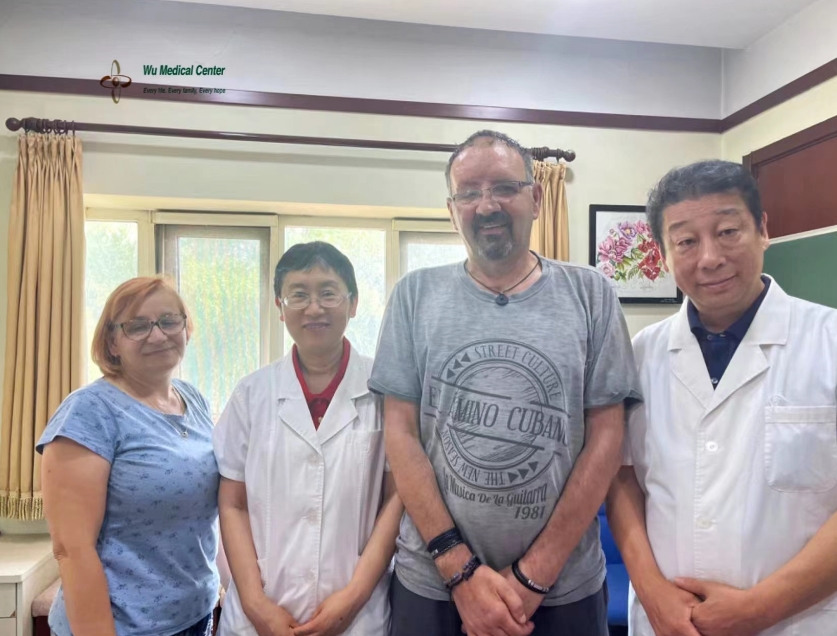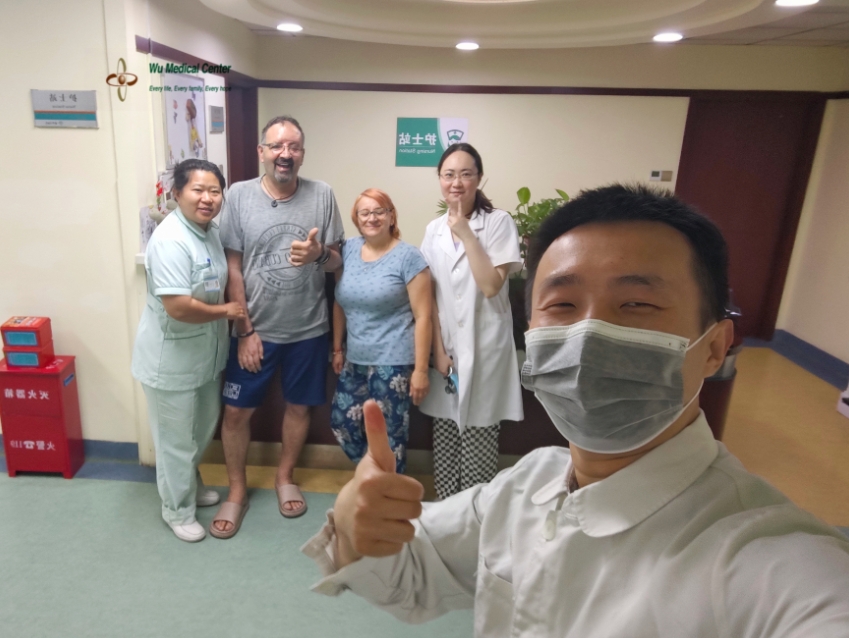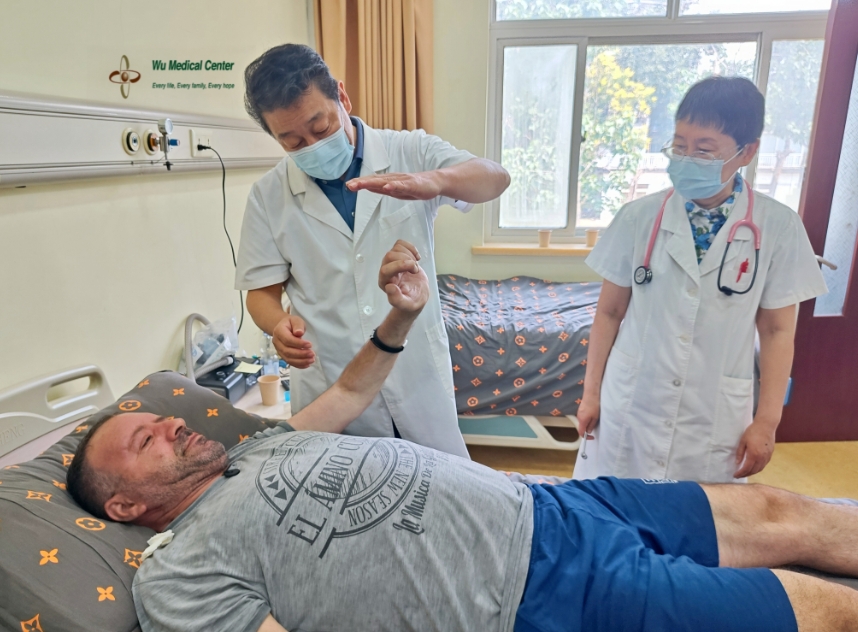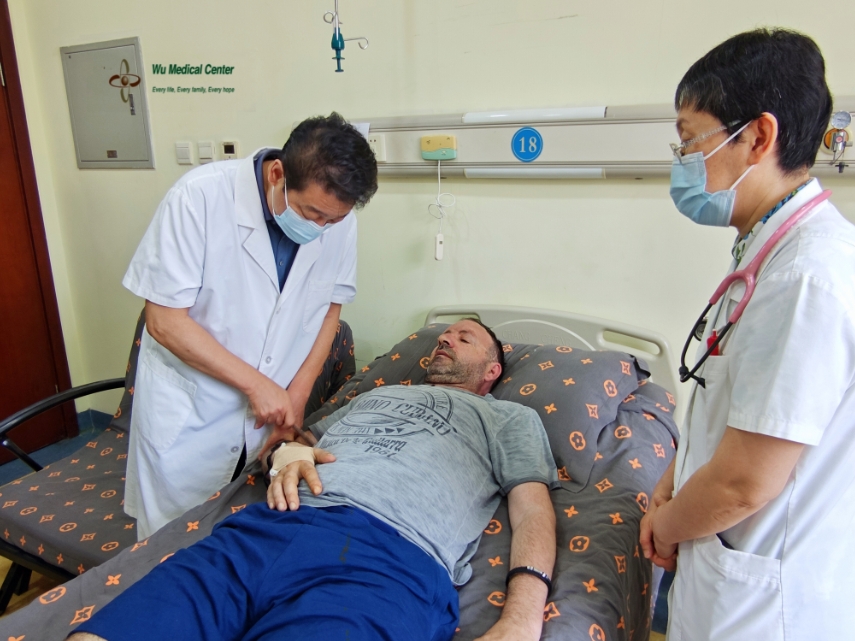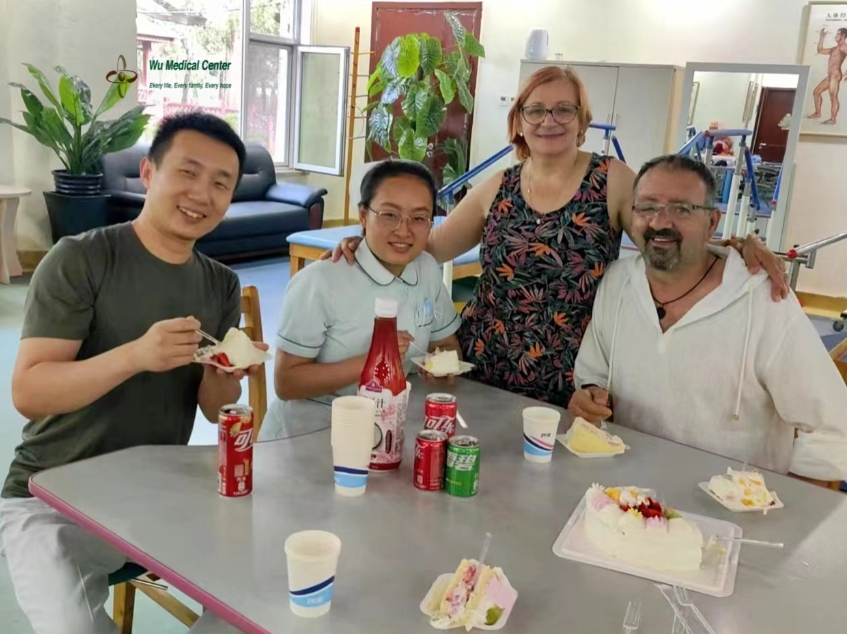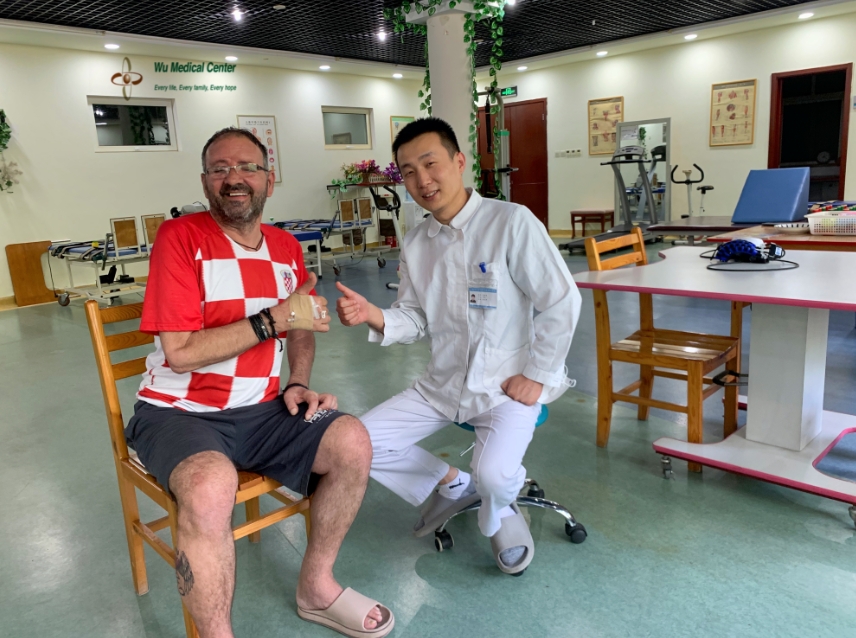Geza Burkovszky-Amyotrophic lateral sclerosis (ALS)-(Croatia)
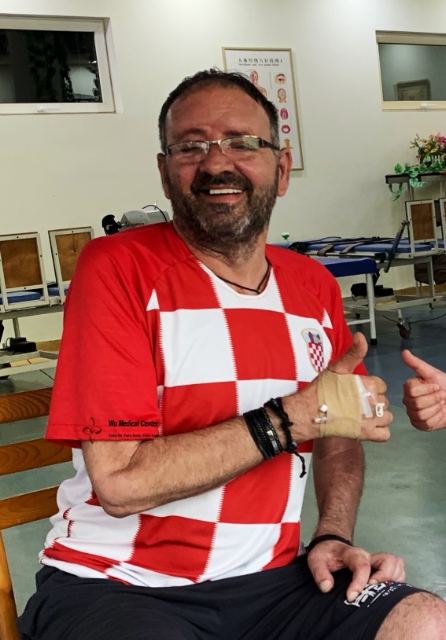 Patient's name: Geza Burkovszky
Patient's name: Geza Burkovszky
Gender: Male
Age: 54 years old
Nationality: Croatia
Diagnosis: Amyotrophic lateral sclerosis (ALS)
On-Admission Conditions:
The patient experienced decreased left upper limb muscle strength five years ago with more significant weakness noted on his left hand. This was diagnosed as ALS by local hospital. He has been taking riluzole (50mg, q12h) treatment, but the effect was not satisfactory. The disease has continued to progress. Currently, his all four limbs have decreased muscle strength, with his upper limbs being worse. He had poor grip strength in both arms and hands, and found it difficult to perform fine movements with his hands. His physical stamina and endurance have significantly declined. He could stand and walk independently, but felt exhausted after walking for 10 minutes and his walking speed has slowed down.
Examination:
The patient had a respiratory rate of 20 times per minute, a heart rate of 57 beats per minute, a blood pressure of 116/76 mmHg, and a blood oxygen saturation of 91-92%. His lips were slightly cyanotic. His supine respiratory rate was 28 breaths per minute, with mild decreased respiratory movement. His breath sounds were slightly reduced in his bilateral lower lungs, without obvious dry or moist rales. His heart sounds were muffled and arrhythmic, with frequent premature beats. His abdomen was flat and soft, with the liver and spleen not palpable. There was no edema in his lower limbs of both legs.
Neurological Examination:
Patient was clear headed and had normal mental status. His speech was slightly reduced in volume. His calculation, memory, and orientation were all normal. His pupils were 3mm in diameter. His right upper eyelid drooped due to trauma. His left eye had a sensitive response to light, while his right eye had a delayed reaction to light. The symmetry of the nasolabial folds and forehead wrinkles was normal, as was the movement of his tongue. He could actively pucker his lips and had normal chewing strength without any significant swallowing difficulties or water choking difficulties. His soft palate had good elevation force and his epiglottis was central. He had a strength of grade 4+ in his neck and shoulder shrugging muscles. His left upper arm flexor strength was grade 3, while his left upper arm extensor and right upper arm flexor and extensor muscles had a strength of grade 2+. He had a grip strength of grade 2- in his left hand and could not grasp objects with difficulty. His right upper arm flexors have a strength of grade 3+, and his right hand grip strength was 2. His lower limb muscle strength was grade 4, and he could not stand on one leg alone. He had weak abdominal and back muscles, and had difficulty in turning over, getting out of bed, and sitting up on his own. He had mild muscle atrophy in his upper limbs, and there were muscle twitches in both his arms and legs. His sensory function in both his arms and legs was normal. His muscle tone and tendon reflexes were decreased in both his upper and lower limbs, and there was a positive pathological sign in both his lower limbs. His finger-to-nose test was poorly completed on his both hands, with difficulty on his left hand. On the left, his fingers were clumsy (his finger-to-thumb movement was very slow, and his little finger could not perform this test), while on the right, it was awkward. His right hand is awkward in the rotation test, and his left hand is difficult. The heel-knee-thigh test of his both lower limbs showed average completion. The cerebrospinal meninges irritation signs were negative.
Treatment process:
The patient was admitted with a clear diagnosis of "amyotrophic lateral sclerosis". During his stay in the hospital, he received treatment with stem cells to repair motor nerve damage, mesenchymal stem cells for nutrition, endocrinal and immunological support, adjuvant therapy with drugs such as Edaravone, riluzole, and neural trophic factors, and comprehensive rehabilitation treatment.
Post-treatment:
The patient's motor function has significantly improved. He has a strength of grade 3+ on his left upper limb proximal muscle, and can touch his head with his left hand when supine. He has a grip strength of grade 3+ on his left hand, and can grasp the fingers of others with resistance. On his right upper limb, he has a strength of grade 4- on his proximal muscle and a strength of grade 4+ on his wrist flexion and extension. He has a grip strength of grade 4- on his right hand, and can use a spoon and perform some feeding activities. His fine motor skills have improved, and he can complete tasks with greater agility compared to when he was admitted to the hospital. His core strength has increased, allowing him to quickly turn over and sit up on his own. His movements are faster and more flexible. His lower limb strength has improved to grade 5, and his plantar flexion and dorsiflexion strength of both feet is also grade 5. He can hold up one leg for approximately 10 seconds at a time. His hand-clasp and alternating finger tests have improved, and he can complete the heel-knee-thigh test on both legs. His heart and lung function have improved, with his blood oxygen level increasing from a maximum of 91-92% when admitted to 96% during periods of calm, and up to 99% when wearing a non-invasive ventilator. His energy, physical stamina, and exercise endurance have improved, allowing him to continue walking for approximately 2 hours without feeling significant fatigue after rehabilitation activities. His balance and agility while exercising have also improved.
